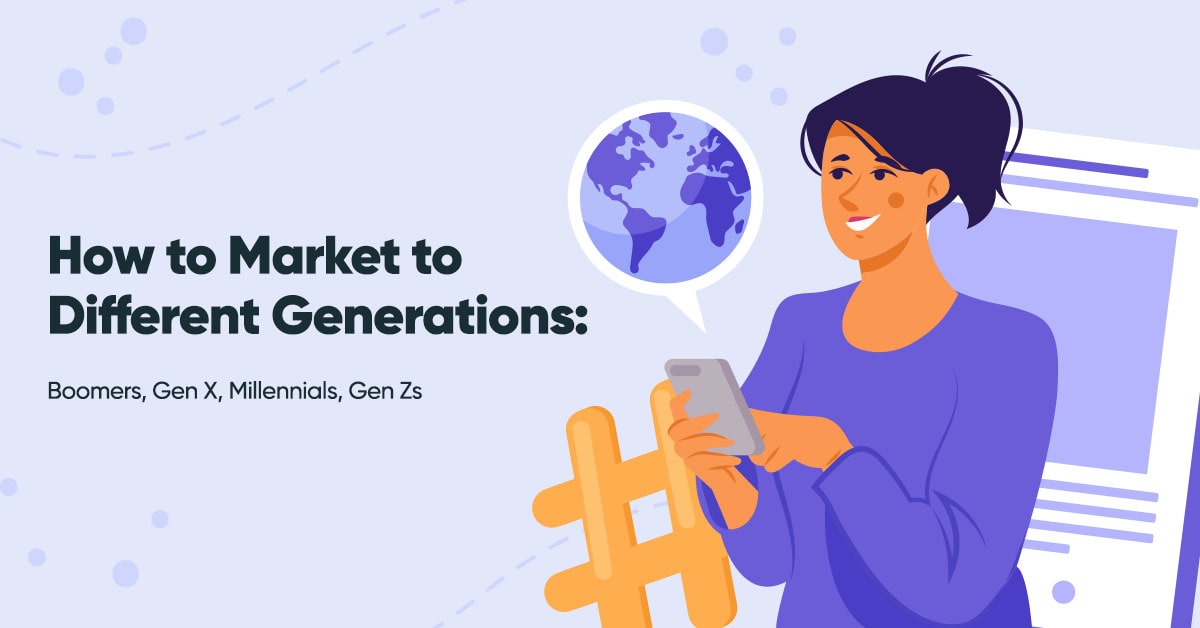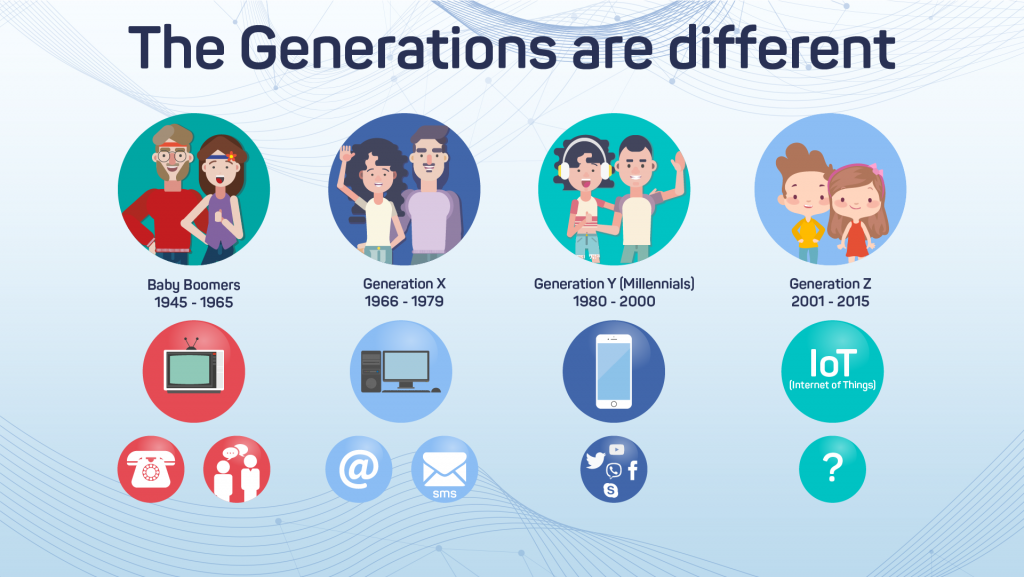How to Market to Different Generations: Boomers, Gen X, Millennials, Gen Zs

Different generations have different needs. Knowing the difference can determine the success of your marketing strategy. Read on to learn more about generational marketing.
Age may determine a person’s values and priorities in life. So it may be a way to understand what the customer needs and prefers, their buying habits and patterns, and what channel they’re more likely to use and be found on.
That’s why many marketers segment their audiences and customers according to age to market to them effectively. This is called generational marketing and it has become increasingly integrated into marketing plans and strategies.
So what is generational marketing and why is it important?
What is Generational Marketing and Why Is It Important?
Generational marketing is the process of segmenting and targeting customers based on the year they were born. There are four generations to speak of: Baby Boomers, Generation X, Millennials (or Generation Y), and Generation Z.
Each generation has its own unique set of characteristics, which define it from other generations. Learning these characteristics allows you to understand their shopping habits, as well as their media consumption habits.
How Marketers Use Generational Marketing
Marketers use generational marketing to create customer profiles for each generation. These customer profiles will be the basis for a segmented group’s values, motivations, and purchasing behavior and will determine the marketing activities implemented later on.
The data that marketers gain from generational marketing also shape how the company develops the product, how they market that product, and how they communicate to their target audiences. It tells marketers which activity to focus on, which allows companies to efficiently allocate their resources to optimize their ROI.
How to Market to Different Generations
Here’s a quick description of each generation and how to market to them:
Baby Boomers (1946-1964)

Baby boomers are now around 58-76 years old. The name was derived from “the boom” or increase in birth rates that occurred after the return of soldiers from WWII. Many technologies that we have today like the internet weren’t invented nor widely used during the formative (and even teenage) years of boomers.
Many from this generation appreciate speaking directly to people. They respond positively to direct marketing such as:
Emails
Flyers
Promotional letters
Newspapers
Phone text messages
Magazine advertisements
TV advertisements
Coupons
Boomers are known to be a very loyal customer base, especially to brands they like and used for a long time.
Learn more about email marketing and how companies use email to capture leads and gain customers.
Generation X (1965-1980)

Members of Generation X are now around 41-57 years old. They are considered the smallest of the generations in terms of number. Many of them are also at the height of their careers today and wield a high purchasing power.
Generation Xers have an established online presence and are almost as active on social media as Millennials. They like to research first before shopping online. They also care a lot about other people’s experiences with products and their reviews before making a purchase.
Many from this generation use the internet to make a purchase. That’s why it’s important to consider the following:
Use Facebook and YouTube as a platform to engage them as they’re most active on the said platforms
Use personalized email for email marketing
Mobile is their preferred way to communicate with businesses and make a purchase
They have learned to embrace digital channels such as online TV and streaming services
Millennials (1981-1999)

Millennials are now around 22-41 years old. They’re considered the most popular and talked about generation, as they are the largest generation. Millennials also hold the highest purchasing power compared to other generations.
Because they grow up in an environment where information can be quickly accessed and distributed, millennials are more socially and environmentally aware compared to other generations. They’re also tech-savvy and seen as more independent than previous generations.
Many marketers use online channels to engage millennials. They’re also very careful about using traditional marketing since Millennials aren’t very responsive to direct sales, direct mail print advertising, radio, and television.
Below are the things to consider when marketing to millennials:
Make your brand socially and environmentally conscious
Find a way to make your product “Instagram-worthy”
Engage your audience by making them participate in social media activities such as writing #hashtags
Make them “experience” your brand
Engage them across all platforms, devices, and applications
Use videos for content marketing
Generation Z (2000-Today)

The oldest members of Generation Z (or Gen Zers) are around 22 years old. Many Gen Zers are incorrectly referred to as Millennials. But they’re different as they are the true digital natives who were born during the rise of the internet and grew up with it.
Because members of Generation Z are tech-savvy and are most active on the internet, marketers mostly include them when targeting millennials. But it’s important to take note of these key differences:
Online shopping behavior: Gen Zers are known to shop more online than Millennials.
Price sensitivity: Gen Zers, who were born or raised in the middle of the 2007-2009 recession, are more price-sensitive compared to Millennials, who are more willing to pay more for convenience.
Mobile online shopping: Gen Zers are twice as likely as Millennials to shop online using their mobile devices.
Social media platform: Gen Zers spend more time on YouTube, compared to Millennials who spend theirs on Facebook.
Buying frequency: Gen Zers spend their money less on products online, compared to Millennials.
Conclusion
Because of the generational differences, it’s important for marketers to keep their marketing efforts diverse. Instead of focusing your campaign on a single generation, make sure you factor in the key differences in buying power, spending habits, and needs and preferences of your target audiences.
Incorporate messages that appeal to each generation in every content you send out. And more importantly, don’t rely on generalizations. Remember, some customers behave differently than others in their generation. Make sure you factor that into your strategy. Want to upgrade your sales and marketing efforts? Talk to our experts and get started here.
Curious how digital ecosystems can help improve your business?
Check out how digital ecosystems can boost your company performance by getting started here.
Book a Demo